In 1969, John Lennon and Yoko Ono famously asked the world to “Give Peace a Chance” on the Plastic Ono Band’s seminal single (Lennon’s first solo release, by the way). If Lennon were alive, I wonder what he might say about the world’s collective inability to heed the message of his music. In the days after a tragedy like Orlando, so many of us our grieving; this has hit the LGBT community particularly hard. The usual topics of my blog have felt off and even a bit tone deaf, so I just didn’t post anything. As I have struggled to find an appropriate way back to Stargayzing amidst this heightened atmosphere of anger, confusion, and pain, I realized the path must be musical.
So in the somber spirit of the last few week, here is a list of 15 songs fine-tuned to the mood of the country. These artists have made musical statements that go far beyond what I feel I can say in words right now. Some songs may be familiar, but I hope many are new. We need to hear these songs now more than ever. The only thing at stake is everything.
 1. “A Hard Rain’s a-Gonna Fall,” Bob Dylan (1963)
1. “A Hard Rain’s a-Gonna Fall,” Bob Dylan (1963)
“I met one man who was wounded in love
I met another man who was wounded in hatred
And it’s a hard, it’s a hard, it’s a hard, it’s a hard
And it’s a hard rain’s a-gonna fall.”
It is only fitting to begin with a song by Bob Dylan who has addressed social protest themes for five decades. This song was written in late-1962, when the writer was just 21, and included on the classic The Freewheelin’ Bob Dylan. According to the liner notes by Nat Hentoff, Dylan said, “Every line in it is actually the start of a whole new song. But when I wrote it, I thought I wouldn’t have enough time alive to write all those songs so I put all I could into this one.” The song has been covered dozens of time and remains one of the most enduring anti-war songs of the last 50 years.
Audio Player
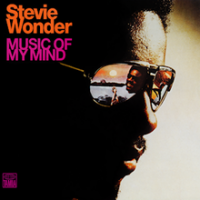 2. “Evil,” Stevie Wonder (1972)
2. “Evil,” Stevie Wonder (1972)
“Evil, why have you engulfed so many hearts?
Evil, why have you destroyed so many minds?
Leaving room for darkness, where lost dreams can hide”
There were so many Stevie Wonder songs that address the subject of universal love and tolerance that it was hard to choose one. I settled on “Evil” from “Music of My Mind” because it is less familiar and reflects a moment when Wonder was fully coming into his own artistically. Co-written with Yvonne Wright, the sister of Wonder’s then-wife Syreeta (“With You I’m Born Again”), the song’s potent lyrics sadly are only more relevant today. I could easily have filled an entire piece just with peace-themed songs by Stevie Wonder.
Audio PlayerMore Stevie Wonder:
Songs That Should Have Been Hits, Volume 6
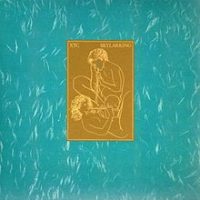 3. “Dear God,” XTC (1986)
3. “Dear God,” XTC (1986)
“Dear God, sorry to disturb you but
I feel that I should be heard loud and clear
We all need a big reduction in amount of tears
And all the people that you made in your image
See them fighting in the street
‘Cause they can’t make opinions meet about God
I can’t believe in you”
Interestingly, the song was not originally included on the English band’s Skylarking album, but was the B-side of a single. After being noticed and played by DJs (a practice which seems both quaint and impossible in the age of Clear Channel playlists), “Dear God” was subsequently added to the album.
“Dear God” questions the existence of a higher power. Writer Andy Partridge based the lyrics on a series of books by the same title that he felt exploited children. Perhaps that is why the first and last verse are sung by the daughter of a friend of album producer, the great Todd Rundgren. The song continues to resonate today; it was featured in The Perks of Being a Wallflower.
Audio Player
 4. “Dear Mr. President,” Pink feat. Indigo Girls (2007)
4. “Dear Mr. President,” Pink feat. Indigo Girls (2007)
“What kind of father would take his own daughter’s rights away?
And what kind of father might hate his own daughter if she were gay?”
I have always admired Pink’s politics and willingness to take chances by speaking her mind. This song was featured on her 2006 album I‘m Not Dead and was written with my old buddy Billy Mann. It takes aim at the presidency of George W. Bush with outstanding precision; this, during a period where pop stars did not generally make political statements. This may explain why the song was not even a single in the states but was a major hit in Europe, where it went to number one in Germany, Austria, and Belgium, and number three in Switzerland.
Audio PlayerMore Pink:
Pink on Being Imitated: Stargayzing Quote of the Day
Pink’s “Over the Rainbow”: Whatever Happened to Phrase. Ing?
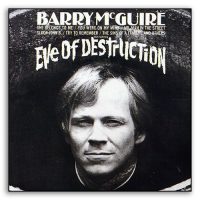 5. “Eve of Destruction,” Barry McGuire (1965)
5. “Eve of Destruction,” Barry McGuire (1965)
“And you tell me
Over and over and over again my friend
Ah, you don’t believe
We’re on the eve of destruction”
One of the defining anti-war songs of the Vietnam era, “Eve of Destruction” has an interesting history. It was written in mid-1964 by P.F. Sloan (Philip Gary Schlein) and originally presented to the Byrds who passed on it. It was recorded by the Turtles and singer Barry McGuire fairly concurrently and McGuire’s version went to number one. McGuire’s version uses a rough vocal that was recorded in one take and meant to be recut, but the single was leaked and all over radio before it could be modified. McGuire subsequently became a born-again Christian and didn’t perform the song for many years. Ironically, the American media helped popularize the song by using it as a sound bed in pieces that addressed the problems of what was then derisively referred to as “youth culture.”
The song has also been recorded by Jan and Dean, The Grass Roots, and Public Enemy, and is name-checked in the Temptation’s 1970 song “Ball of Confusion (That’s What the World is Today).”
Audio Player
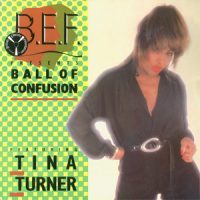 6. “Ball of Confusion (That’s the World is Today),” B.E.F. feat. Tina Turner (1982)
6. “Ball of Confusion (That’s the World is Today),” B.E.F. feat. Tina Turner (1982)
“Run, run, run but you sure can’t hide. An eye for an eye, a tooth for a tooth.
Vote for me and I’ll set you free. Rap on, brother, rap on.”
As the sixties gave way to the seventies, Motown loosened its artistic grip on its stable of artists, ushering in a new era of soul music that addressed contemporary issues with greater directness and emotional urgency. “Ball of Confusion (That’s What the World is Today)” was written by legendary Motown writing team Barrett Strong and Norman Whitfield —”I Heard it Through the Grapevine,” “Psychedelic Shack”—among many, many others. The Temptations original version of their song went to number three on the pop charts.
In 1982, a collective called British Electric Foundation (B.E.F.), which featured members of new romantic bands Love and Rockets and Heaven 17 recorded an album of synth-driven cover songs of the 1960s and 1970s called Music of Quality and Distinction, Volume One, featuring guest vocals by a host of singers. Turner’s cover of “Ball of Confusion” was a hit in some European territories and essentially began the international comeback that culminated two years later with “What’s Love Got to Do With It.” The notion of a comeback like this is unimaginable now owing to pervasive ageism at American Top-40 radio. This track, like the original Temptations version, still sounds excellent today.
Audio Player
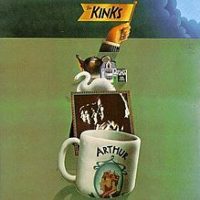 7. “Some Mother’s Son,” The Kinks (1969)
7. “Some Mother’s Son,” The Kinks (1969)
“While all the parents stand and wait
To meet their children coming home from school
Some mother’s son is lying dead”
In 1969, The Kinks released a concept album called Arthur (Or the Decline and Fall of the British Empire) that was tied-in to a scripted TV program in the UK that was never produced. Though the album, which was conceived by frontman Ray Davies, was not a huge commercial success, it fared better in the US than the bands native UK and set the groundwork for a major return in 1970 with “Lola.”
The searing anti-war song “Some Mother’s Son” still packs quite a punch.
Audio Player
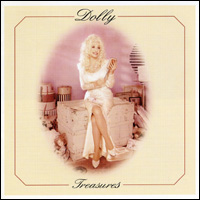 8. “Peace Train”/”Tsitimela Sokuthula,” Dolly Parton (1996)
8. “Peace Train”/”Tsitimela Sokuthula,” Dolly Parton (1996)
“Get your bags together
Go bring all your good friends, too
‘Cause it’s getting nearer
Soon it will be with you”
Country legend and gay icon Dolly Parton is also a national treasure and beloved by generations. A gifted songwriter, she has also enjoyed great success interpreting other writer’s songs. Case in point: in 1996 she covered Cat Stevens’ “Peace Train” on her album Treasures with a beautifully conceived assist from South African group Ladysmith Black Mambazo.
The following year, she was joined by the group for a rousing version of the song on a network special. The year after that, Dolly enjoyed her first (and only) top-ten dance hit with a remixed version of the song. Is it any surprise that Dolly prefers optimism to nihilism?
More Dolly Parton:
Dolly Parton: The Soundtrack of My Life
Dolly Parton’s Incredible 1960s Beehive
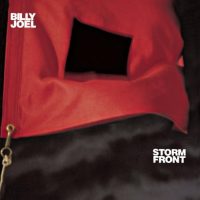 9. “Leningrad,” Billy Joel (1989)
9. “Leningrad,” Billy Joel (1989)
“And cold war kids were hard to kill
Under their desks in an air raid drill
Haven’t they heard we won the war
What do they keep on fighting for?”
The great Billy Joel wrote an entire album addressing Cold War themes (1982’s The Nylon Curtain), but I have always loved this song. In fact, when I was daydreaming about songs to include, the lyric “what do they keep on fighting for” kept popping into my head and it took a minute for me to locate the song in the pop culture compost heap that is my brain.
From time to time, I still feel wistful that Billy Joel stopped recording after 1993’s River of Dreams. Like the titular character in the 1981 French thriller Diva, Joel simply stepped away. Though he has continued to tour, he never wrote and recorded another pop song, begging questions like, “Where did the impulse to write disappear to?” and “Does an artist have a responsibility to honor their gifts and continue creating?” We will never know what Billy Joel might have come up with had he continued, but can only feel grateful for what he gave when he could.
Audio Player
 10. “Harvest for the World,” Isley Brothers (1976)
10. “Harvest for the World,” Isley Brothers (1976)
“Dress me up for battle, when all I want is peace
Those of us who pay the price, come home with the least
Nation after nation, turning into beast
When will there be a harvest for the world”
I am a big Isley Brothers fan. Out of all the classic soul groups, I think the Isley Brothers’ albums stand up as complete, individual statements, like rock albums. Like a rock band, the Isleys often covered pop songs and made them soulful (“Summer Breeze,” “Hello It’s Me”) and embraced other characteristics more usually found on a rock album, like the two minute prelude that preceeds this song. Also remember, “Harvest for the World” was the title cut of their album in the midst of the disco tsunami; yeah—kind of like a rock band.
The album Harvest for the World topped the R&B charts and the single went top-ten R&B and was a mid-chart pop hit. I still listen to this song often and appreciate the way it always makes me feel warm on the inside. Note: it sounds especially good in a car.
Audio Player
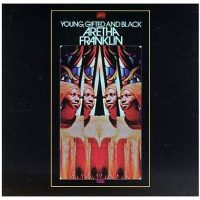 11. “Border Song (Holy Moses),” (1972)
11. “Border Song (Holy Moses),” (1972)
“Holy Moses, can we live in peace
Let us try to find a way to make all hatred cease
There’s a man standing over there
What’s his color do you care
Holy Moses, can we live in peace”
Between 1967 and 1974, in one of the truly awe-inspiring runs in the history of the record business, Aretha Franklin did not make a single false move; not a bad song or false note. Though she is a songwriter of exceptional gifts, one of her trump cards was reinterpreting songs by other artists. Her take on Elton John’s “Border Song” is absolutely one of her finest moments of that period. When she sings Bernie Taupin’s lyrics, we believe. But, don’t take my word for it: just click “play.”
Audio Player
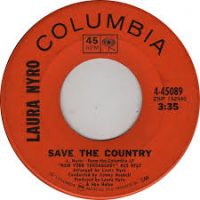 12. “Save the Country,” Laura Nyro (1968)
12. “Save the Country,” Laura Nyro (1968)
Though she re-recorded “Save the Country” in 1969 for her classic album New York Tendaberry, I prefer her more-produced single version from ’68, when Columbia label head Clive Davis still held out hopes that Nyro could get on the radio with her own songs in addition to watching everyone from Streisand to Three Dog Night sail up the charts with her compositions. Perhaps she was too intense; to quirky. True to form, the Fifth Dimension enjoyed a multi-format hit with “Save the Country” in 1970, proving it wasn’t the song.
Though she was inducted into the Rock ‘N Roll Hall of Fame a few years back, Nyro is criminally under-appreciated today. If you are unfamiliar with Laura Nyro, I urge you to take the time to explore her still-powerful albums. Her iconoclastic blend of Broadway, Brill Building, and gospel sounds influenced decades of singer/songwriters and remains as viscerally effective as ever. Without Nyro, there would have been no Desmond Child, Shawn Colvin, or Bette Midler, to name but three artists that quickly come to mind.
Audio Player
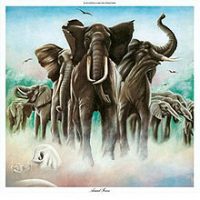 13. “(What’s So Funny ‘Bout) Peace, Love and Understanding,” Elvis Costello (1990)
13. “(What’s So Funny ‘Bout) Peace, Love and Understanding,” Elvis Costello (1990)
“And as I walked on
Through troubled times
My spirit gets so downhearted sometimes”
The song was written by Costello’s then-producer Nick Lowe (“Cruel to Be Kind.”) According to Wiki: The Elvis Costello & The Attractions version was first issued as the B-side of Lowe’s 1978 single “American Squirm” credited to “Nick Lowe and His Sound.” At the time, Lowe was Costello’s producer, and he produced this track as well. When the song became a hit, it was quickly appended as the last track to the US edition of Costello’s album Armed Forces.
Audio Player
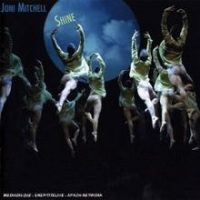 14. “If I Had a Heart,” Joni Mitchell (2007)
14. “If I Had a Heart,” Joni Mitchell (2007)
“Holy war
Genocide
Suicide
Hate and cruelty…
How can this be holy?
If I had a heart I’d cry”
Joni Mitchell is indisputably one of the great songwriters of the rock-era. Prior to her tragic accident in 2014, she was also one of the most bitter artists ever to have enjoyed decades of such peerless success and influence. Though many have trouble listening to the scorched remains of her singing voice, I rather enjoy its dissipated qualities, much the way I enjoy late-period Billie Holliday. Certainly for Shine, the artist’s most cynical album, I think the vocal damage suits the bleak, dystopian feel of the muisc. “If I Had a Heart” is the darkest of the dark; a rather stunning final comment from one of the greatest female artists of the last hundred years.
Mitchell commented on the song after the album’s release, “My heart is broken in the face of the stupidity of my species. I can’t cry about it. In a way I’m inoculated. I’ve suffered this pain for so long…the West has packed the whole world on a runaway train. We are on the road to extincting ourselves as a species.”
Audio PlayerMore Joni Mitchell:
When a Song Become a Copyright Christmas Edition: Joni Mitchell’s “River”
Joni Mitchell’s House is a Very, Very Fine House
 15. “Redemption Song,” Stevie Wonder (1996)
15. “Redemption Song,” Stevie Wonder (1996)
“I wanna say
Won’t you help to sing
These songs of freedom
‘Cause all I ever had
Redemption song”
I realize that to many it is practically heresy to not use Bob Marley’s original version. Fortunately ,I am not the kind of person who cares about things like that and, frankly, would take a great cover of a reggae song over the original any day (especially with a vocal like this). I have long said that “Redemption Song” is the greatest Stevie Wonder vocal ever recorded: the most powerful; most skillful; most emotionally connected. His sense of when to riff and when to hold a note for maximum emotional impact is, for me, the very essence of vocal interpretation and a stunning tribute to his artistry. There is simply no way that Marley’s interpretation could ever make me feel what this recording does; so sue me…and Amen.
Audio PlayerMore Stevie Wonder:
Melismania! The Art of Singing Has a Terrible Case of the Runs

About the artist: Nathan McCarron is a 23-year-old, Australian artist known for his realistic pencil portraits of relevant pop culture personalities. The self-taught artist uses drawing as a mechanism to capture his inspirations and express his passions. Currently he is working on his “Iconic Series,” which will include 65 iconic people, 75 iconic creatures, and 40 iconic buildings from around the world. http://www.nathanmccarronart.com



